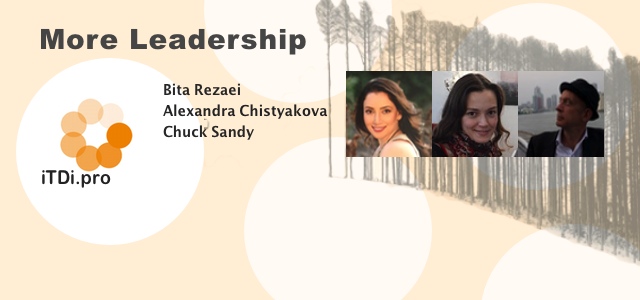
From Manager to Leader
Bita Rezaei
Ask anyone and they will tell you there is a difference between being a manager and a leader but where the difference lies doesn’t seem to get beyond the quote “managers drive, leaders lead.” History is filled with wisdom and case studies on the qualities of good leaders and effective leadership. Over the past few years there have been so many books, articles and blog posts published around the “how to’s” of becoming a good leader, but as tempting as it may seem to call yourself one, it is not that easy.
It is said that management is career whereas leadership is a choice – a calling. Leaders get their power and authority not from their positions but from the trust people put in them. While at times you can tell a manager from miles away by a fair judgment of the dress code, way of speaking and mannerism, being a leader calls for another set of characteristics. To me, it’s about having that intangible charismatic component that some people have and some just don’t.
In ELT, often times more experienced teachers find themselves in management positions only because it seems like the next logical step in their career. As we take up the new role, we are full of ideas and plans for achieving what we always dreamed could be achieved. We hope for a break-through superstar performance but there is a limit to how far our organizational powers can take us. The classic command and control management model – which, contrary to popular belief still applies even in our most progressive 21st century companies – will not encourage your team to go the extra mile. You may be respected, obeyed but not whole-heartedly followed.
To move into a leadership role, you need your team members to see you as someone they know is working for the greater good – for them and for the organization. You need to earn their trust, spread your vision, and inspire them. But where do we start?
It’s not that difficult to find a leadership brand and stick to it – without considering how to improve and expand your skills. But the way I see it, striving for excellence as the one in charge calls for recognizing strengths and accepting limitations—in yourself and others. It involves recognizing and empowering great performances both in yourself and in a wide variety of team members.
Whether you’re leading a huge team on a challenging project or just trying to climb the career ladder, you need to be aware of where you are standing as a leader. So before starting your assessment of others, think about your own values, beliefs and ethics. It often helps a lot to put down what you believe in and then see how those beliefs are playing out in the organization you are working in.
Remember that it’s not about them. It’s about you. Ask yourself:
- Am I a good role model for my team? Do I practice what I preach?
- Do I trust my team as much as I want them to trust me?
- Am I providing my team with enough support?
- Do my actions inspire others to dream more, learn more, do more and become more?
- How often do I take listening tours around the office? And when I do, am I listening to understand or to reply?
- Am I bold in the face of uncertainty? Am I willing to take the untravelled path?
- Do I hold myself responsible for a higher standard than anybody expects of me, or do I often excuse myself from the standards expected of everyone else.?
- Do I make heroes out of others by giving them credit for their achievements?
Leadership is about magnifying morality. Realistically, we need to ask ourselves the questions above (and several more) from time to time. I am only sharing what I think should matter to the ones who are willing to take leadership roles but how exactly to reach that level of excellence is beyond this post. It seems to be the time someone tells us how to “do the right things” instead of “doing things right”.
Maybe a book called “From manager to leader” could help!
Connect with Bita and other iTDi Associates, Mentors, and Faculty by joining iTDi Community. Sign Up For A Free iTDi Account to create your profile and get immediate access to our social forums and trial lessons from our English For Teachers and Teacher Development courses.










